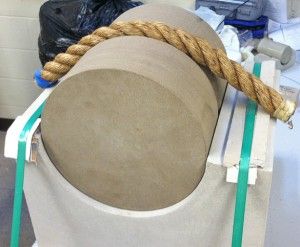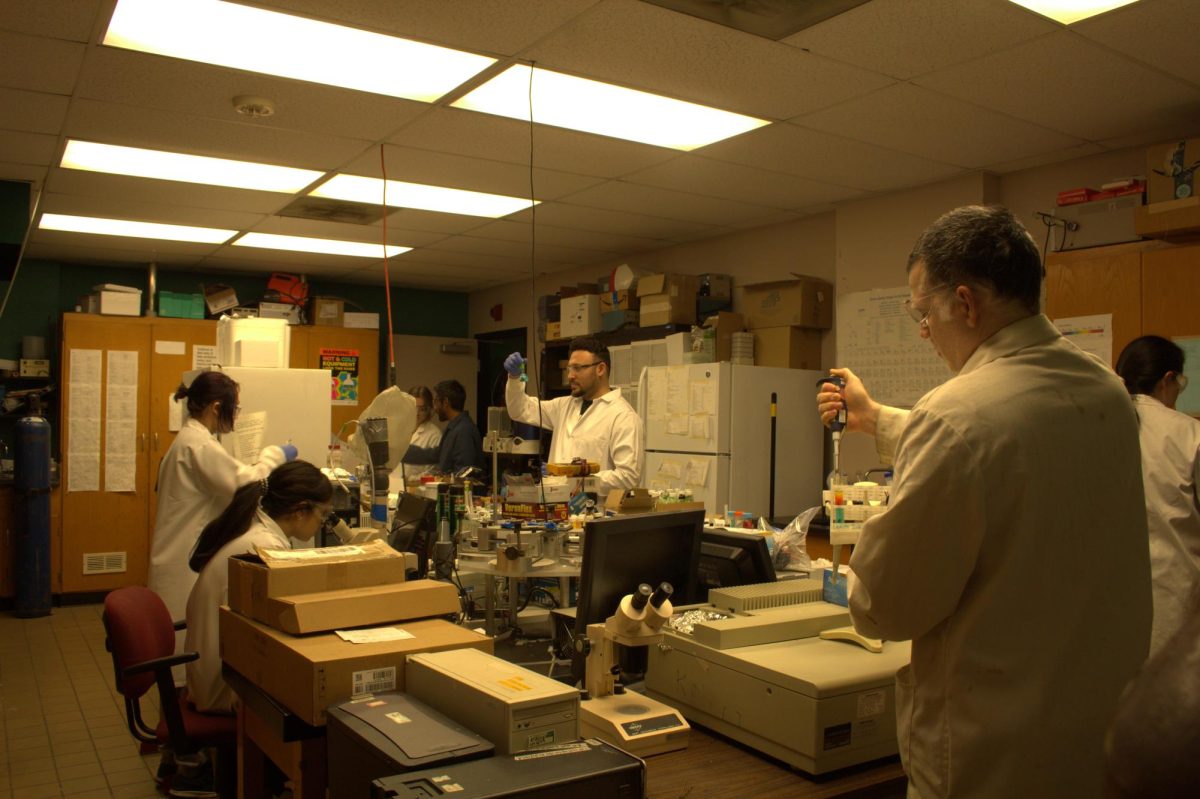Project seeks plausible way Great Pyramids were built
April 21, 2013
The alien theory may be debunked.
Steve Blakely, a mechanical engineer from St. Louis, could soon be the first person to provide a conceivable method the Egyptians could have used to build the Great Pyramids. It has been a long mystery to the modern world how the ancient civilization had the technology to lift 5,000-pound stones for its pyramids; one popular theory even suggests space aliens helped with construction.
Yet, Blakely said he’s determined to convince the public the Egyptians were clever enough to build the pyramids by themselves.
Advertisement
“It was truly an incredible task,” he said. “The more you look into it, the more you’re impressed, but it doesn’t mean they couldn’t have done it.”
Blakely said he first came up with the idea to study how the pyramids were built about seven years ago.
“I like to solve problems, I like history, and it’s hard to avoid if you look into those areas running into the Great Pyramids,” he said.
According to Blakely’s website, egyptianpulley. com, his device, called the Egyptian Pulley, uses a cylinder that rotates in an open sleeve or cradle with a polished, mating surface. The part of the cylinder in contact with the rope would be grooved and roughened to prevent rope slippage, and flax oil or rendered animal fat would be used for lubrication on the rest of the cylinder.
Blakely recruited his nephew, Greg Blakely, of Anna, for the project, since Greg has a tractor and hill on his property.
The initial idea was to build what Greg Blakely called a rope-ramp. He said his uncle wanted to create a ramp to move the stones up the pyramid’s side using a rope. After initial testing, though, the two ran across the problem of how to minimize rope damage.
“That got Steve thinking about it more, and that’s when the story evolved into the Egyptian Pulley,” he said.
Advertisement*
Steve Blakely said he came up with the Egyptian Pulley about three years ago, and that’s when the project blossomed.
“The more I thought about it, I realized it was better than my original idea because it’s so simple and it works,” he said.
Steve Blakely, a 1969 University of Illinois at Urbana-Champaign engineering graduate, said he had the idea to sponsor a senior thesis project for his research. A group of U of I students tested to see how durable the pulley would be and if it could pull the weight. Steve Blakely said he was fairly confident the tests would work but believed the students could give him more objective results.
The students involved include Gabe Gaeta from Naperville, Neal Jacobsma from South Holland, Caleb Gray from Hamilton and Yi-An Liou from Taiwan, all seniors in mechanical engineering.
Gray said he took interest in the project because of its ties to ancient Egypt and its private sponsorship, a trait many other senior projects don’t have because of company sponsorships.
Gaeta said he agreed the private sponsorship sets the project apart.
“It’s not driven by us trying to get results that will maximize profits for a company,” he said. “It’s just us trying to take a look at a problem that’s been around for thousands of years that still remains really controversial.”
The group began its project in January and tested it April 15. They will present their results in class April 30. Steve Blakely said he and his nephew plan to attend the presentation.
The Blakelys’ next step is to build a pyramid section at a 52-degree angle at Greg Blakely’s home in Anna, he said. Steve Blakely said it would probably be about the size of a house’s foundation. It will lie against the hill’s side, he said, with the Egyptian Pulley at the top pulling the weight. Steve Blakely said he hopes to have it completed by the end of the summer.
After the successful demonstrations the Blakelys and U of I students completed, Steve Blakely said he will be the only person to have described in engineering detail and demonstrated full scale a plausible way the Great Pyramid stones were lifted.
“If I could solve this thing, it’s more of an ego than a money thing,” he said. “What I’m after is to convince the public of the plausibility of this.”
As far as making history, Gray said he thinks it’s possible with further development.
“There’s a lot of other layers to this solution that will have to be worked out before this could go a lot further,” he said.
Gaeta said there are many different theories that have been pursued by others, so Steve Blakely’s success depends on whether he continues to look at ancient Egyptian technology challenges and if his findings can be explained.
“Eventually, just like any kind of theory, if it withstands all the criticism it will get and it continues to be fine-tuned so there’s less and less flaws or limitations with the idea, then I can see it (becoming a credible theory),” he said.
Advertisement










Paul Hai • Nov 15, 2023 at 8:48 pm
Technically speaking a pulley produces mechanical advantage otherwise it is technically considered to be a dead or live sheave which is usually associated with direction change only, with no mechanical advantage.. The ancient Egyptian four lobe pinion pulley has an innate mechanical advantage of 2.8 (MA=2.8), which means a 2500 kg Pyramid block requires just 900 kg of input effort. The four lobe pinion pulley step-walks when hoisted, thus placing part of the load onto steps, which is an elegant solution and proof of engineering innovative know-how.